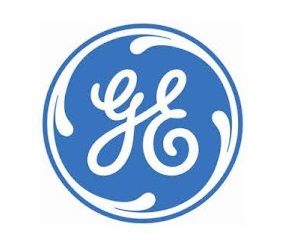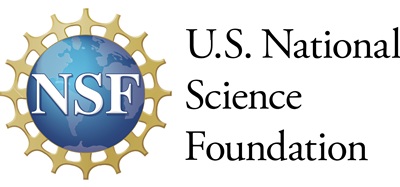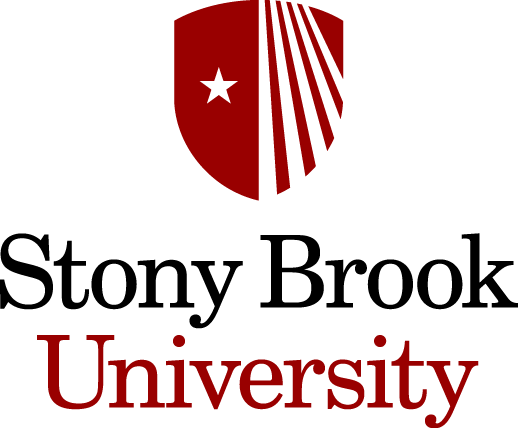Industry Projects
The Advanced Energy Research and Technology Center is engaged in a variety of projects with our industrial and academic partners, including The National Science Foundation, General Electric, Sunrise Wind LLC, and Stony Brook University.
View our ongoing projects below.
Principal Investigator: Dr. Ali Khosronejad (SBU)
Industrial Partner: Verdant Power Incorporated.Governments and investors worldwide have recognized that fossil fuels are not sustainable. As a result, many agencies are capitalizing on clean energy production from tidal farms and other renewable sources. However, developing clean energy from tidal farms requires engineering tools that can predict performance, enabling effective design and positioning of individual turbines.
This project will investigate the effectiveness of Verdant Power’s marine Tidal Turbine System in generating power in Long Island Sound, between Little Gull Island and Fishers Island, through a series of high-fidelity simulations and a techno-economic analysis.
Principal Investigator: Dr. Fang Luo (SBU)
Industrial Partner: Ørsted.This post-doctoral research project, conducted in collaboration with Stony Brook University (SBU), Aalborg University (AAU), and Ørsted, aims to develop and validate advanced methodologies for nonlinear stability analysis of Renewable Energy Systems (RESs). Funded under the Sunrise Wind R&D Agreement, the project seeks to enhance Ørsted's internal knowledge of large signal stability and improve in-house scanning tools as part of the RM3 strategy.
The research focuses on increasing computational efficiency and accuracy in stability assessments under large signal disturbances, ultimately contributing to the reliability of RESs. The project will be executed across multiple institutions, ensuring a comprehensive and applied approach to addressing real-world RES challenges.
Principal Investigator: Dr. Shikui Chen (SBU)
Industrial Partner: General Electric Company/National Science Foundation

The project aims to develop level-set-based, multi-physics, and multi-material topology optimization software for electric machine design. Conceptual design is considered the most important stage in the product life cycle, and topology optimization is the most advanced tool for conceptual design. The proposed topology optimization tool will be used in the initial stages of electric generator and motor development and may enable the design engineers to achieve a better design with reduced lead time. The key differentiator of the proposed magnet topology optimization tool lies in the level-set-based parametric topology optimization framework. Compared with element-based approaches such as the homogenization method and SIMP methods, the level-set-based topology optimization approach can handle multi-physics and multi-material magnet topology optimization problems with design-dependent boundary conditions. The topology optimization will be integrated with model-based co-design tools for electric-machine design to simultaneously achieve optimal designs
at the component and system levels of an electric machine.The proposed research includes: (1) Multi-physics modeling of electric generators; (2) parametric level set topology optimization of multi-physics and multi-material magnets; (3) integration of topology optimization with model-based co-design; and (4) advanced manufacturing and performance validation of optimized magnets for electric generators.
This project will implement NSF I-Corps training for participating students and conduct outreach activities to broaden participation in science, technology, engineering, and mathematics. The project team has been collaborating with GE on nonlinear and multi-material topology optimization of magnets for electric machine design. The team's current focus is on improving the design and manufacturability of high-performance magnets through advanced computational techniques.
Principal Investigator: Dr. Shikui Chen (SBU)
Industrial Partner: National Science Foundation/GE

In this PFI-RP project, a team formed by researchers from Stony Brook University (SBU) and experts from General Electric-Renewable Energy (GE) aims to advance the design of rare-earth (RE) permanent magnet structures for generator systems and improve the architecture and design methodology of future generators and electric motors. This project is expected to significantly increase the applicability of physics-based simulation-driven design technology to the growing volume of electrical engineering problems.
The success of this project could change the landscape of the electric generator and electric motor industries. The Principal Investigator and students working on this project have completed the NSF ICORPS training, which has helped the team to better identify potential users and understand market needs. This has significantly enhanced teams’ ability to align their technology
with industry requirements.Principal Investigator: Dr. Dimitris Assanis (SBU)
Industrial Partner: Sunrise Wind LLC and Stony Brook University

Hydrogen (H2) can transform energy technologies by offering a green and sustainable alternative to fossil fuel-based energy production. H2 generated by electrolysis may be considered carbon neutral if the electricity is sourced from excess renewable generation, such as wind. However, like all other renewable sources, it suffers from intermittency, therefore requiring storage. The work proposed here brings together SBU strengths in mechanical and electrical engineering to develop a techno-economic analysis (TEA) of wake-field interactions of multiple wind turbines in a wind farm. Performance curves will be developed using computational fluid dynamics to understand the wake field, determine the appropriate turbine power production, and correspondingly, the levelized cost of electricity. With this knowledge, SBU will collaborate with BNL researchers to better understand the downstream H2 production and energy storage using proton exchange membrane electrolyzer and build the performance of this conversion and grid integration into our TEA.
In this research effort, ACES Lab will extend the previously-developed TEA framework to evaluate the levelized cost of electricity of a wind farm, inclusive of wake field interactions, allowing us to determine when green H2 production is economically viable. Single-turbine high-fidelity 3D computational fluid dynamics (CFD) is progressing satisfactorily, with current efforts focusing on expanding to multi-turbine simulations to study wake field interactions under these computational conditions. In parallel, Orsted-provided meteorological and performance data of an installed offshore wind farm is being studied analytically using WindFLO.
Principal Investigator: Dr. Dimitris Assanis (SBU)
Industrial Partner: Genesys Engineering PC (Acquired by Willdan Group Inc)
Hard-to-decarbonize industry sectors of off-road and non-road transportation, stationary and distributed power generation, as well as building heating applications, are extremely energy intensive and presently largely depend on fossil fuels. Green hydrogen, generated from renewable energy, provides an alternative pathway, beyond electrification, to transition these hard-to-decarbonize industry sectors. The implementation of green hydrogen is largely challenged by storage constraints due to its low energy density. Alternative hydrogen carriers can provide more energy-dense, green hydrogen-based solutions that are easier to store and implement in physical systems. Ammonia is a commonly available, carbon-free hydrogen carrier that can be used to replace fossil fuels and thus transition these hard-to-decarbonize sectors. Understanding the use, handling, and consumption of ammonia is critical to developing these much-needed decarbonization pathways.
Currently the team is working on Milestone “Ammonia fuel system development and demonstration.” Milestones “Safety Consideration and Applicable Building Code Documentation” and “Initial Literature Review” were completed. An anhydrous ammonia fuel injection system has been designed and is presently being fabricated to enable ammonia fumigation in a single-cylinder research engine. In parallel, a health and safety plan and relevant standard operating procedures have been developed and are currently under safety review prior to commencing experimental engine testing next.
Principal Investigator: Dr. Dimitris Assanis (SBU)
Industrial Partner: AWE Technologies LLC
Stony Brook University (SBU) will aid AWE Technologies LLC (AWE) in the testing and validation of AWE technologies to develop better sensors and new applications. AWE possesses acoustic technologies that target applications using non-invasive measurement techniques such as acoustic resonance spectroscopy (ARS) or swept frequency acoustic interference (SFAI). These technologies could be used in thermo-fluidic sciences and other mechanical engineering applications to determine structural information that has been modified by the fluid inside, separation/filtration processes, gas and/or liquid composition monitoring, ultrasonic temperature measurement, acoustic pressure, and gas flow measurement.
Currently the team is working on Milestone – Target application for testing and identifying validation activities”. A scaled crude oil separation loop featuring an optical test section is being developed to study how acoustics can enhance the separation of water and sand from crude oil. Crude oil barrels and a 24” spool will be delivered shortly to start acoustic separation testing under static conditions.
Principal Investigator: Dr Vladimir Samuilov (SBU)
Industrial Partner: FuzeHub/Magnet Launch LLC
Reusable launch vehicles will bring the price of launching down and reduce the carbon footprint of space. Magnet Launch, LLC, proposes to develop the concept of a launch assist system. This system is expected to replace first-stage boosters, eliminating the heaviest rocket segments, the bulk of the cost and carbon footprint of a space launch as well. The proposed launch assist system consists of a long tube with a track for magnetic levitation and propulsion (maglev) of launch vehicles. Prior to launch, the tube is evacuated of air to create a low-grade vacuum and reduce drag. At launch, the track will accelerate the vehicle. to a significant fraction of orbital velocity. Finally, the vehicle will exit in the reduced atmospheric density. In the face of growing concern about global warming and with interest in space rising, this proposal is more relevant than ever.
This concept is not absolutely new. NASA explored a similar idea, under the name "Maglifter,” and a group from Brookhaven National Labs proposed a larger-scale system called StarTram." With some innovative design decisions and paired with reusable launch vehicles, a strategically sized system should reduce the long-term cost to electricity—under $1/kg. The team has submitted Power Storage, Management, and Distribution subsystem (PSMAD) reports to the sponsor.
